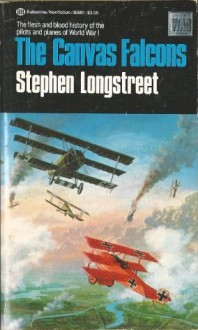
This is a work born of a long-burning passion for the subject. In his introduction, Stephen Longstreet describes how as a youth he collected newspaper articles and spoke with pilots of the First World War about their experiences. As an adult he spent a quarter of a century accumulating materials about the air war in order to write this book, in which he sets out to tell the stories of “the men and machines who fought the pioneer air combat.”
And this passion shows on nearly every page. Longstreet’s focus is on the “human element,” or the lives of the men who participated in the air war. While his focus is on the famous aces – most of whom receive brief biographies and select descriptions of their air battles – he also discusses the ground crews and manufacturers as well. Anthony Fokker receives particular attention, with his story encapsulating just how fluid the aircraft industry was at the time and how quickly fortunes could change for the people in it. It all makes for very entertaining reading.
Yet for all of its strengths, this is also a deeply flawed book. In focusing on the aces, Longstreet leaves out vital aspects of the air war. As is so often the case, Longstreet’s book is mainly about warfare over the Western Front, with aerial battles elsewhere covered in just two short chapters. Moreover, it is almost exclusively a book about fighters and fighter pilots: coverage of the bombing campaigns is confined to a single chapter about the Zeppelin raids on England, while scouting is effectively ignored altogether. Nor is there is any context provided for the aerial dueling he describes, making it seem as though it was all a struggle apart from the larger conflict. Worst of all, though, is the clichéd nature of Longstreet’s writing, which too often devolves to national stereotyping to fill in the gaps in his analysis.
Because of this, anyone new to the subject can finish this book with a deeply distorted understanding of air warfare during the First World War. For all of the thrilling episodes recounted in purplish prose, Longstreet’s reduction of an important aspect of the conflict to a series of dramatic personalities and biplane battles does a real disservice to his subject. The best that one can hope for in this respect is that enough of Longstreet’s zeal will rub off on his readers that they will seek out other books for a more comprehensive picture of the air war, lest they believe that the popular image of the air war is the only one that matters.

 Log in with Facebook
Log in with Facebook 













